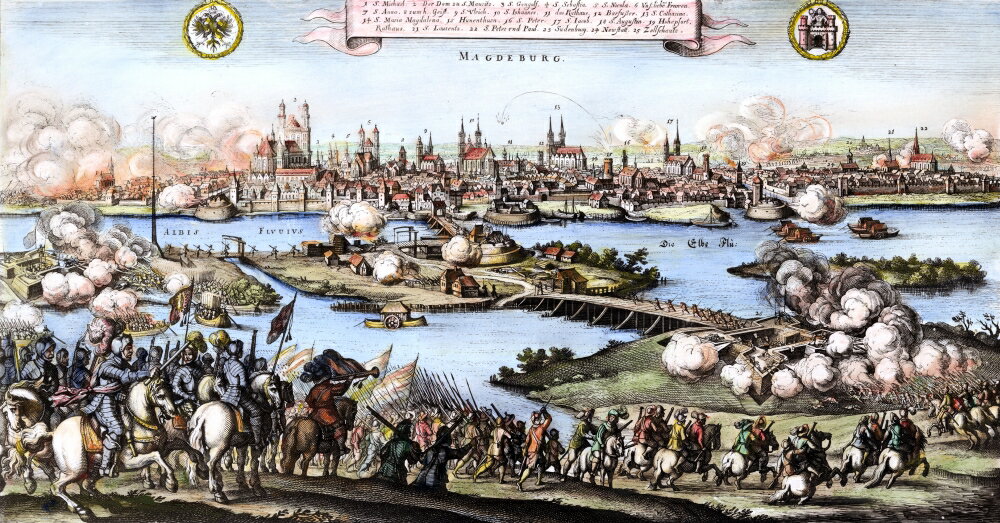
Posterazzi Siege Of Magdeburg 1631 Ngraf Von Tilly Commander Of The German Catholic League
On their way to Magdeburg, the Thirtieth Infantry Division sacked enemy pockets and took the nearby towns of Hamelin on April 7 and Braunschwieg on April 12. On April 13, 1945, the Thirtieth Infantry Division rolled into the city of Magdeburg; there began the little-known, albeit important, battle at the war's end, called the Battle of Magdeburg.
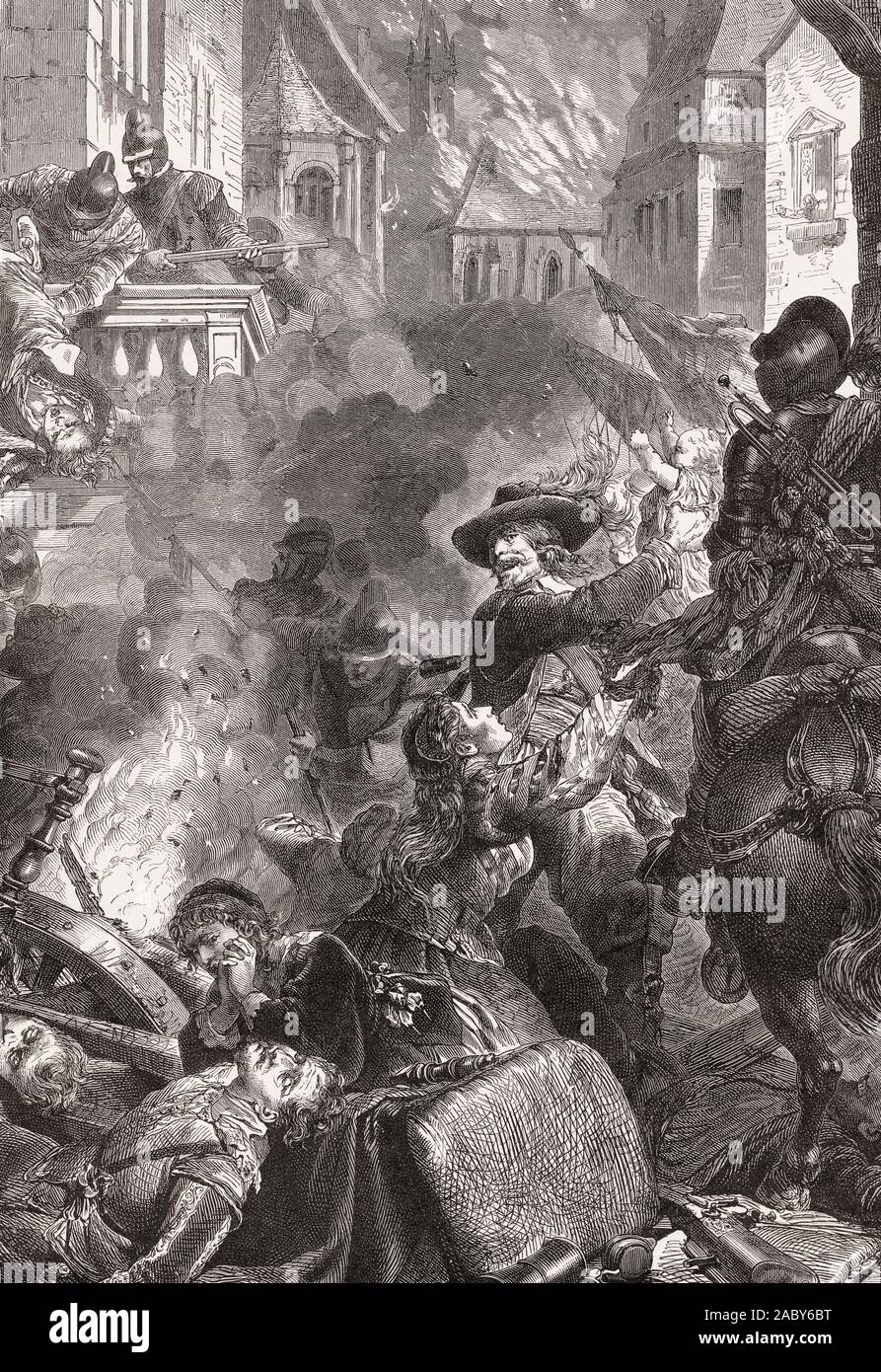
Siege of magdeburg hires stock photography and images Alamy
The Sack of Magdeburg (German language: Magdeburgs Opfergang or German language: Magdeburger Hochzeit) refers to the siege, the subsequent plundering, and the massacre of the inhabitants of the largely Protestant city of Magdeburg by the forces of the Holy Roman Empire and the Catholic League during the Thirty Years' War. The siege lasted from November 1630 until 20 May 1631. The Thirty Years.
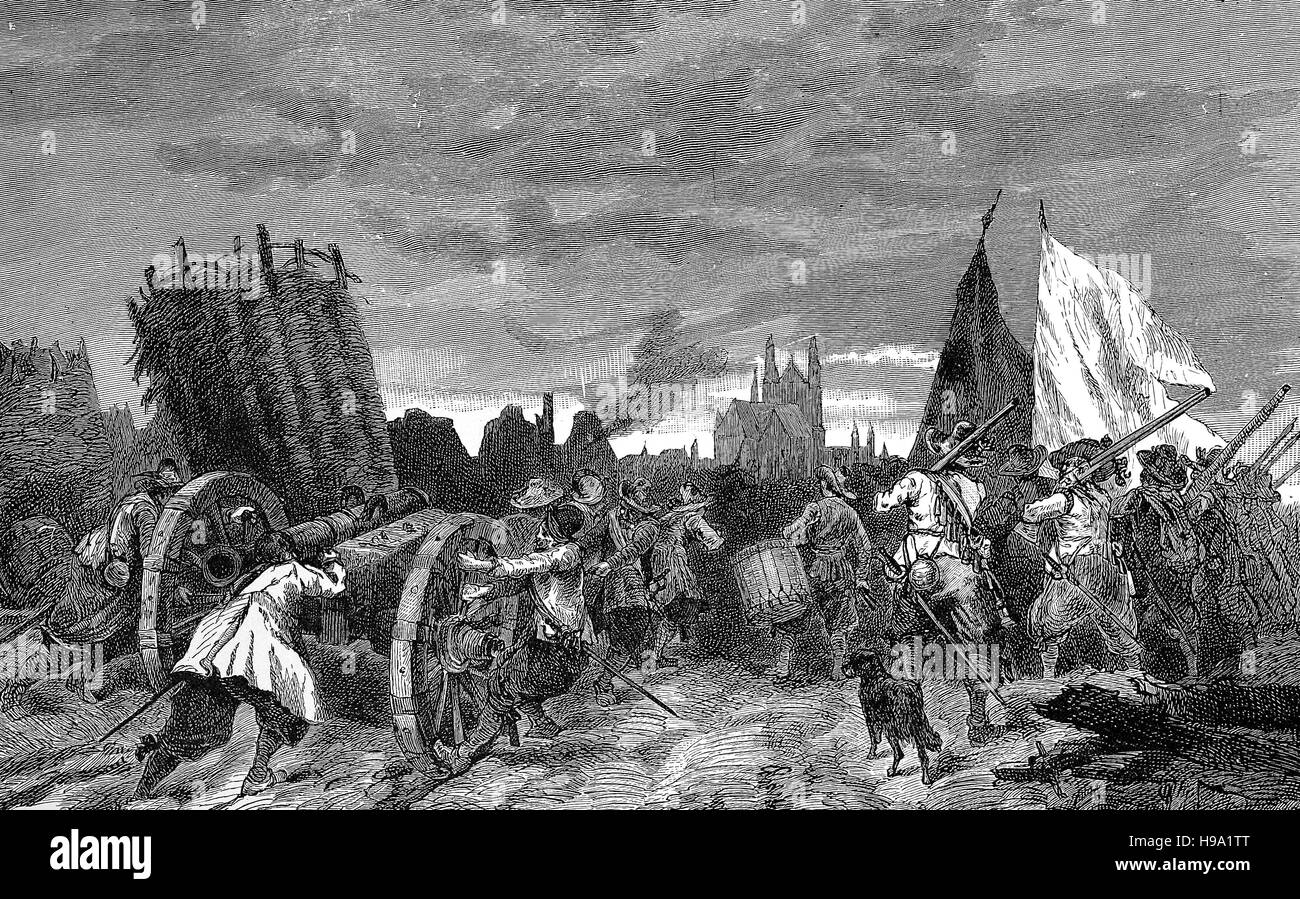
Der Sack von Magdeburg, Magdeburgs Opfergang oder Magdeburger Hochzeit bezieht sich auf die
This chapter focuses on one of the most infamous events of the Thirty Years' War—the destruction of Magdeburg on 20 May 1631 by imperial troops commanded by General Johann Tserclaes, Count of Tilly (1559-1632). I am fascinated by the role of the media in reporting on and rather quickly shaping reactions to this calamity.

2nd Armored Division at Magdeburg, Germany, 18 April, 1945. History war, War thunder, Magdeburg
Fall of Magdeburg. April 16th-18th _____ The following map/photo section is a remarkable 'look' at Magdeburg on April 17th, 1945. The scans of the maps are from a huge map my father, Pfc. Ralph E. Watson, 117th, Co. K, 4th platoon, picked up in Magdeburg and brought home. The map measures about 90 cm by 120 cm and it's scale is 1:1000 = 1 cm/100m.

Magdeburg 1631 Sack of Magdeburg Wikipedia Mutter courage, Hochzeit, Merian
The sack of Magdeburg, also called Magdeburg's Wedding (German: Magdeburger Hochzeit) or Magdeburg's Sacrifice (Magdeburgs Opfergang), was the destruction of the Protestant city of Magdeburg on 20 May 1631 by the Imperial Army and the forces of the Catholic League, resulting in the deaths of around 20,000, including both defenders and non-combatants.The event is considered the worst massacre.

The Siege of Magdeburg (1631) (Peeter Meulener) Nationalmuseum 17230 Pieter Meulener
For the American GIs entering the heart of Germany, April 1945 was a month filled with some of the most brutal fighting of the war, when the horrors of the Nazi regime were finally revealed to the world. A group of German prisoners captured at Friedrichsfeld are marched through a town in Germany, after the crossing of the Rhine by the US 9th Army.

Thirty Years War 1618 1648 Destruction of Magdeburg in 1631 Stock Photo Alamy
Magdeburg, city, capital of Saxony-Anhalt Land (state), east-central Germany. It lies along the Elbe River, southwest of Berlin. First mentioned in 805 as a small trading settlement on the frontier of the Slavic lands, it became important under Otto I (the Great), who founded there (c. 937) the

Fall of Magdeburg to Flemish General Tilly, resulting in massacre of citizens, Thirty Years' War
The sack of the Protestant city of Magdeburg in May 1631 was one of the most horrific episodes of the war. Following a successful siege, Tilly's Imperialist and Catholic League soldiers went wild in an orgy of pillage, rape, and murder that was cruel even for those days. The result left thousands of Magdeburg's citizens dead.

Fall of Magdeburg
In a strategic move during the Battle of the Bulge, Operation Bodenplatte was formulated to disable Allied airfields in the Low Countries. While Wehrmacht forces engaged in a ground offensive in.

Magdeburg fortress under artillery fire, 1631. Военное искусство, Магдебург, Гражданские войны
Battle of Magdeburg. Tilly first laid siege to the Protestant city of Magdeburg, which had rashly declared for Gustav, and on May 20, 1631, fearing the arrival of a Swedish relief army, Tilly's troops stormed the city and conducted a thorough sack. Of more than 30,000 people in Magdeburg, at least three-quarters perished, and most of their.
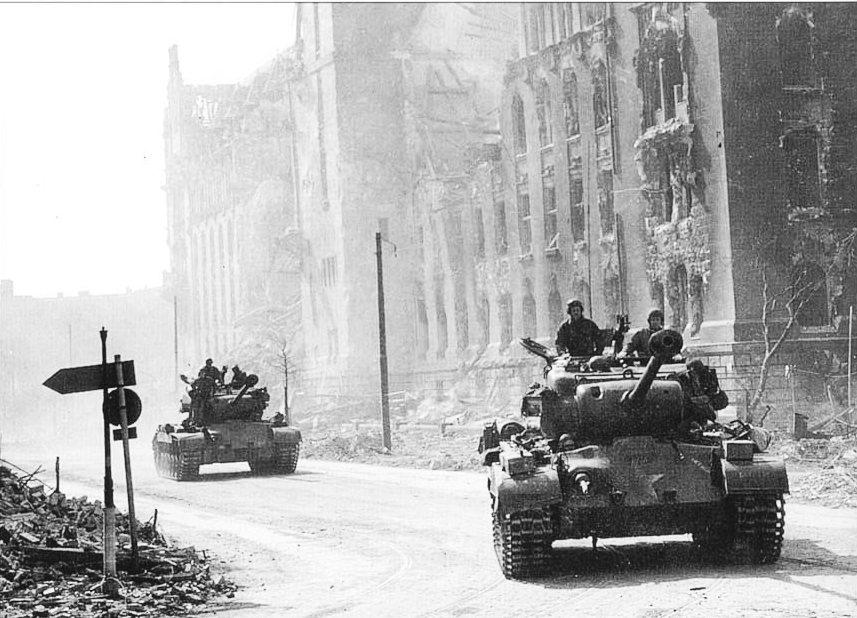
[Photo] M26 Pershing tanks of the 2nd Armored Division on the streets of Magdeburg, Germany, mid
The siege of Magdeburg (French: Siège de Magdebourg) took place from 25 October to 8 November 1806 during the war of the Fourth Coalition.A French force, initially under the command of Marshal Joachim Murat, then a French army Corps under the command of Marshal Michel Ney laid siege and eventually obtained the surrender of Franz Kasimir von Kleist's Prussian force that had taken refuge in.

Ansicht des zerstörten Magdeburg 1945 News Photo Getty Images
Battle of the White Mountain (1620) Sack of Magdeburg (1631) Capture of Maastricht (1632) Battle of Lützen (1632) (DOW) Gottfried Heinrich Graf zu Pappenheim (29 May 1594 - 17 November 1632) was a field marshal of the Holy Roman Empire in the Thirty Years' War.
History in 1/72 The siege of Magdeburg 30Years war
Order of battle Allied forces. At the very beginning of 1945, the Supreme Commander of the Allied Expeditionary Force on the Western Front, General Dwight D. Eisenhower, had 73 divisions under his command in North-western Europe of which 49 were infantry divisions, 20 armored divisions and four airborne divisions.Forty-nine of these divisions were American, 12 British, eight French, three.
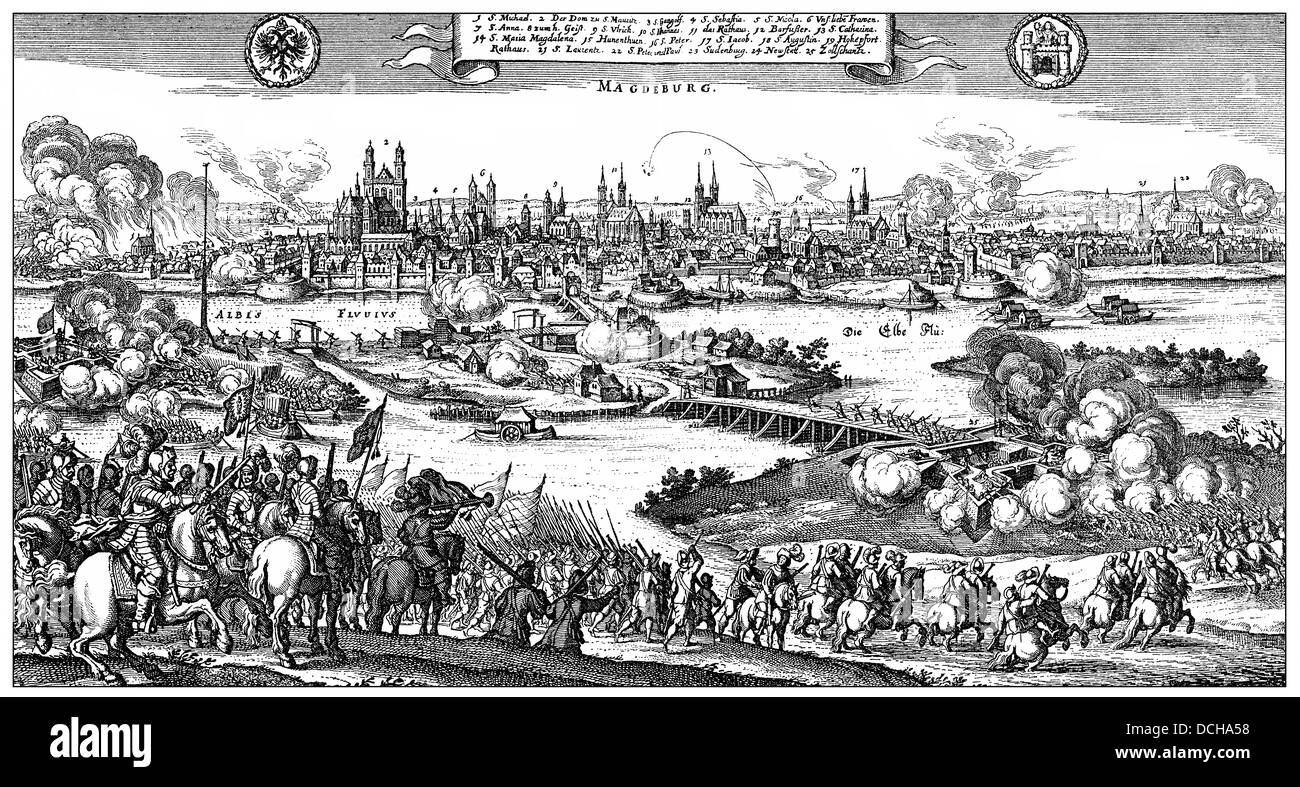
the siege and destruction of Magdeburg in 1631 by imperial troops under Tilly and Pappenheim
Battle of Magdeburg, (November 1630-20 May 1631).After defeat at Dessau and Denmark's withdrawal, the Protestants had received a boost when Sweden invaded Germany in 1630, but they could not prevent the imperial army's sack of Magdeburg, the most infamous episode of the Thirty Years' War.. Magdeburg had been under a loose imperial blockade, commanded by Count Pappenheim, since November.

Soldiers During The Battle Of Magdeburg Stock Illustration Download Image Now 19th Century
Magdeburg (German: [ˈmakdəbʊʁk] ⓘ; Low German: [ˈmaˑɪdebɔɐ̯x]) is the capital of the German state Saxony-Anhalt.The city is situated at the Elbe river.. Otto I, the first Holy Roman Emperor and founder of the Archdiocese of Magdeburg, was buried in the city's cathedral after his death. Magdeburg's version of German town law, known as Magdeburg rights, spread throughout Central and.
Today 74 years ago on 16.January.1945 Magdeburg witnessed a disastrous airbombing, with 90 of
The savage European conflict known to history as the Thirty Years' War was in its 13th year. For seven months the Protestant city of Magdeburg, in northern Germany, had been under siege by Catholic forces of the Holy Roman Empire. Then, on the morning of May 20, 1631, the Imperial besiegers launched their final, and this time successful, assault.